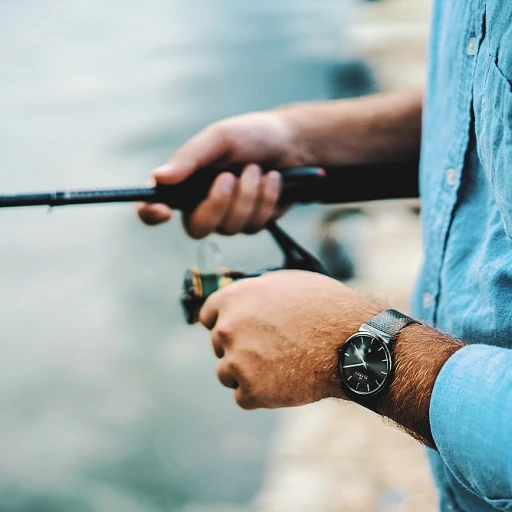
The story of the largest tuna ever caught
The unprecedented record of the giant bluefin
The story of the largest tuna ever caught is nothing short of legendary. It takes us back to a crisp, early autumn morning on October 26, 1979, off the shores of Nova Scotia, Canada. Ken Fraser, an ardent fisherman, embarked on what seemed like a typical fishing excursion, but it turned into a historic event that would etch his name forever in the annals of sport fishing.
The colossal Atlantic bluefin tuna (Thunnus thynnus) that Fraser pulled from the ocean was a behemoth. Weighing in at a staggering 1,496 pounds, it still holds the record bluefin tuna in the International Game Fish Association (IGFA) archives. The majestic creature, measuring 12 feet long, soon garnered worldwide attention, and its tale continues to astound anglers and fishing enthusiasts to this day.
What made the catch even more special
Fraser's triumph wasn't merely about luck. It's about dedication, skill, and an unyielding passion for fishing. Using a simple rod and reel setup with a mackerel as bait, he fought the giant fish for about 45 minutes—a battle of wits and endurance. The triumph was sweet, as it showcased the beauty and thrill of giant bluefin tuna fishing.
As Fraser himself recounted to the New York Times, the moment he saw the fish surface was nothing short of electrifying. "It was like a submarine coming out of the water," he said. The fish's massive girth and powerful strength were overwhelming. Fraser knew he had something extraordinary on his hands.
Insights from the fishing community
James E. Chambers, the editor of the renowned Fishing Magazine, notes, "Fraser's catch is more than a record; it's a symbol of what's possible in sport fishing. It continues to inspire both amateur and seasoned anglers to push the boundaries of what's achievable."
The IGFA, an authoritative body in recreational fishing, has consistently lauded Fraser's catch as the benchmark for record-breaking tuna. Other anglers in Nova Scotia and around the Atlantic frequently reminisce about that day, celebrating it as a pivotal moment in their community.
Controversies and conservation
Despite the exhilaration surrounding Fraser's catch, it has also ignited debates about tuna conservation. Bluefin tuna numbers have dwindled significantly, and they are now listed on the IUCN Red List as endangered. The fishing community is wrestling with the balance between the sport's joy and the imperative to preserve these remarkable creatures.
For more gripping stories about fishing adventures, challenges, and expert insights, check out this article on recreational fishing for barracuda.
Meet Ken Fraser: the man behind the record
Ken Fraser's moments of glory
Ken Fraser, a Canadian born in the quaint fishing town of Nova Scotia, etched his name into the annals of sport fishing history. October 26, 1979, marked the day when Ken Fraser caught the largest bluefin tuna ever recorded—an awe-inspiring 1,496-pound giant. This monumental feat went down in the records of the International Game Fish Association (IGFA) and remains unbroken to this day.
Behind the record-breaking catch
Fraser’s jaw-dropping bluefin was not just a lucky catch but the result of meticulous planning and expert technique. To reel in such a massive fish, he used specialized tackle designed to withstand the brute strength of the Atlantic bluefin. Fraser recalls the moment his reel spooled with pound after pound of resistant force, “The fight was grueling; every muscle in my body was pushed to its limit.” George Gill, an experienced fisherman and close friend of Fraser, confirmed that the fight lasted nearly 45 minutes, a testament to both the fish's power and Fraser’s determination.
Legacy and personal reflections
Fraser’s achievement not only broke records but also brought substantial attention to the town of Nova Scotia, turning it into a magnet for fishing enthusiasts. His story has been featured extensively, most notably in The New York Times and Canada's prominent sport fishing magazines. Anne Nuffer Hinze, a renowned journalist, once wrote, “Ken Fraser’s legacy is not just a record; it’s an inspiration for all who take up a fishing rod against the mighty ocean.”
For Fraser, fishing has always been more than a hobby; it's a lifelong passion. Reflecting on his record-breaking catch, he shared, “Catching that bluefin was like capturing a piece of the Atlantic itself. It’s a moment I relive every time I head out into those waters.” His feat still inspires countless anglers, making them believe that the next record-breaking bluefin might be just a cast away.
Personal anecdotes from Ken Fraser
Ken’s fascinating capture is a favorite staple in local folklore and fishing tales around Nova Scotia. Fishermen around the globe look to Fraser's experience for practical tips and inspiration. The secret diary of a trophy fish: tales of angling technique and triumph captures some of these anecdotes, shedding light on the emotions and techniques behind reeling in such a massive fish.
Understanding the different species of tuna
Different types of tuna species
The world of tuna fishing is vibrant and diverse, boasting a variety of species that differ in size, habitat, and culinary value. Understanding these different species can enhance your appreciation of this remarkable fish.
Bluefin tuna
Bluefin tuna, specifically the Atlantic bluefin tuna (Thunnus thynnus), is one of the largest and most sought-after species, known for its incredible size and top-notch meat quality. The largest bluefin tuna ever caught weighed a staggering 1,496 pounds, a record set by Ken Fraser off Nova Scotia, Canada. This impressive catch showcases the immense size bluefin tunas can reach.
Pacific bluefin tuna
The Pacific bluefin tuna is another popular species. Although generally smaller than the Atlantic variant, it can still grow incredibly large, with notable catches recorded in places like Japan and off the U.S. Pacific coast. These fish are prized for their rich, fatty flesh, which is a staple in high-end sushi restaurants.
Yellowfin tuna
Yellowfin tuna, known scientifically as Thunnus albacares, are another prominent species in the tuna family. These fish are highly prized by commercial and sport fishers for their speed and strength. The largest yellowfin tuna ever caught weighed 427 pounds and was landed off the coast of Mexico, a testament to their formidable presence in the ocean.
Southern bluefin tuna
The Southern bluefin tuna (Thunnus maccoyii) is found mainly in the southern hemisphere, particularly in waters around Australia and New Zealand. These fish are similar to their northern cousins but tend to have a distinctive taste and texture. While not as large, they are still a significant catch for many fishers.
The ocean's powerhouses
Each species has its unique size, habitat, and characteristics that captivate anglers worldwide. Whether fishing off the coast of New Jersey or in the Gulf of Mexico, understanding the distinct varieties of tuna can enrich the fishing experience. It’s these diverse species that make the sport so thrilling and rewarding.
For more insights into honing your skills and maximizing your tuna fishing adventure, see how local fishing clubs enhance angler expertise.
The tackle and techniques used to catch giant tuna
Gear up: rods, reels and more
When it comes to landing a behemoth like the largest tuna ever caught, you're not just grabbing any old fishing rod. You need specialist tackle that's built to withstand the Herculean battle. The record-breaking bluefin tuna, weighing 1,496 pounds and caught off Nova Scotia by Ken Fraser in 1979, required gear capable of handling immense pressure.
Ken Fraser, renowned in the world of tuna fishing, utilized a 130-pound class rod fitted with a heavy-duty reel. These rods are usually around 6 to 7 feet long, providing both the flexibility and strength needed for deep sea fishing. High-capacity reels with robust drag systems are also essential. The reel used in Fraser's legendary catch was spooled with 130-pound test mono line, making it a perfect match for the giant he hauled in. According to the IGFA, line class records play a crucial role in recognizing and authenticating these catches.
The importance of bait: luring giant tunas
It's not just about the rod and reel; the right bait can make or break your mission to snag a monster bluefin tuna. Popular baits include mackerel, herring, and squid. These are not your everyday baitfish; they're handpicked for their appeal to the massive predators lurking in the deep. Ken Fraser lured his record-setting bluefin tuna with a carefully selected herring, which mimicked the natural prey in those waters.
Techniques: patience and perseverance
Techniques for catching giant bluefin tuna involve a mix of expertise, craftiness, and endurance. 'Trolling' and 'chumming' are the most commonly used methods. Trolling involves pulling bait or lures behind a boat, while chumming requires dispersing ground bait to attract the fish to your location.
According to Anne Nuffer Hinze, a sport fishing expert, positioning your boat correctly and maintaining a consistent speed, usually around 4 to 6 knots, is key. 'However, patience is the most crucial part of the game,' says George Gill, another seasoned fisherman. 'You're wrestling with a giant, often for several hours.'
Modern advancements: tech in tackle
Fishing technology has come a long way since Ken Fraser's record-breaking day. Innovations like anti-reverse systems in reels, braided fishing lines, and high-strength carbon fiber rods have made it easier for anglers to handle the immense power of a giant bluefin tuna. But regardless of technological advancements, the spirit of the fight remains the same—a test of human determination against nature's fiercest warriors.
Record-breaking tuna catches around the world
Legendary tuna catches: past and present giants
The story of giant tuna catches doesn't end with Ken Fraser's iconic catch. Around the globe, fishermen have been pushing the boundaries, chasing the thrill of reeling in mammoth tunas. Each catch tells a unique story, often reflecting the diverse tactics and regions associated with these titanic fish.
Notable record catches around the world
In the Pacific, the record for the largest Pacific bluefin tuna was set in 2014 off the coast of New Zealand. The fish, weighing an astonishing 907 pounds, was caught by a team of sport fishermen and has become a benchmark for others aiming to break the record.
Meanwhile, the Atlantic Ocean has its own fair share of remarkable catches. Off the coast of Nova Scotia, Canada, famous tuna grounds have produced giants. Local fisherman George Gill caught a 1,496-pound Atlantic bluefin in 1979, solidifying Nova Scotia's reputation as a hot spot for large bluefins.
The technology and technique evolution
Over time, the methods and equipment used to catch these behemoths have evolved. From the once simple lines and hooks to the latest in tackle technology, each advancement brings with it more epic tales of the sea. However, some argue that traditional techniques still hold a special place, offering a unique challenge compared to modern methods.
For a deeper dive into this debate on traditional vs. modern fishing methods, you might find this article on traditional fishing methods particularly insightful.
Epic battles and memorable moments
Every fisher has a tale to tell, but nothing quite compares to the legendary battles with record-breaking tunas. The emotion, the struggle, and the ultimate triumph or loss at the end of the line - these are the moments that define sport fishing. Take, for example, the thrilling story of the 427-pound yellowfin tuna caught off the coast of Mexico, showcasing the lengths to which anglers will go for that ultimate prize.
Let’s not forget the importance of the International Game Fish Association (IGFA) in maintaining and verifying these records. Their stringent guidelines ensure the legitimacy of each record, keeping the spirit of sport fishing alive and competitive.
Ongoing quests for the biggest catch
The hunt for the largest tuna ever caught is far from over. Enthusiastic anglers worldwide continue to chase this elusive goal, traveling from the warm waters of the Gulf of Mexico and the Hawaiian coast to the frigid climates of the North Atlantic in Canada.
But it's not just about the weight. The sheer determination and passion behind each attempt, along with the evolving strategies and stories, add layers of depth to each record attempt. As long as there's an ocean to fish and a dream to catch, these record-breaking adventures will continue to inspire and captivate.
If you're keen to explore more about these high-adrenaline moments, check out this detailed article on challenging fish catches.
The role of the International Game Fish Association (IGFA)
The International Game Fish Association (IGFA): the backbone of sport fishing records
When you think about monumental catches like Ken Fraser's 1,496-pound bluefin tuna in Nova Scotia, it's the IGFA that verifies and champions these feats. Founded in 1939, the International Game Fish Association has become the golden standard for setting the rules and standards in recreational fishing. Their extensive network of certified weigh stations and highly trained officials ensures the legitimacy of every record submitted.
Why IGFA is crucial to the fishing community
IGFA is more than just a record-keeping organization; it’s pivotal in advocating for ethical fishing and conservation. They produce educational content, support scientific research, and foster an environment where sport fishing can thrive sustainably. Bill Shedd, IGFA Chairman, once said, "Conserving our fish populations ensures the sport we love can be enjoyed by future generations." Their work is pivotal, especially for species like the Atlantic bluefin tuna, which has faced severe overfishing issues.
Milestones and monumental records set
Since their inception, the IGFA has chronicled some jaw-dropping catches. George Gill made waves with his 1,496-pound bluefin tuna in Prince Edward Island. Not far behind is the renowned Ken Fraser, another Nova Scotia legend, whose astounding catch still stands as a testament to skill and perseverance. These records aren't just numbers; they're stories of adventure and dedication.
Controversies and challenges faced by IGFA
Like any venerable institution, IGFA has had its critics. Some anglers argue about the stringent rules, while others appreciate the strict adherence to honesty and ethical standards. A notable ordeal was when a 1,100-pound bluefin caught in the Gulf of Mexico was disqualified due to rule violations. Such decisions, though unpopular with some, uphold the integrity and trust in IGFA’s work.
How the IGFA adapts with the times
In recent years, the IGFA has modernized its approach, incorporating digital records and updates while ensuring their long-established rules remain relevant. Amid the surge of modern tech, they're making sure not to lose sight of legacy techniques, proving that sometimes, the old ways still outsmart modern innovations. They balance innovation with tradition, ensuring that fishing remains both a reflection of its past and a beacon towards a sustainable future.
The economic and cultural impact of tuna fishing
The financial worth of tuna fishing
Tuna fishing isn't just about the thrill of the catch; it's also a multimillion-dollar industry. The global market for tuna fisheries is estimated to be worth around $42 billion annually, according to a report from the International Game Fish Association (IGFA). This economic powerhouse provides substantial income to coastal communities where giant bluefin tuna are often hunted.
In regions like Nova Scotia, where Ken Fraser caught his record-breaking bluefin tuna, local economies thrive on this fishery. Not only does it support commercial fishing, but recreational fishing also attracts tourists, resulting in additional revenue streams. According to the New York Times, Prince Edward Island and Nova Scotia see a significant uptick in tourism in the peak tuna fishing months.
Socio-cultural importance
The impact of tuna fishing extends beyond economics, seeping into the cultural fabric of many communities. In Japanese culture, tuna, particularly bluefin tuna, is revered and often featured prominently in sushi and sashimi. The high demand in Japanese markets can inflate prices to extraordinary levels. For example, one giant bluefin tuna weighing in at 608 pounds was sold for a staggering $3.1 million during a New Year auction at Tokyo's famed Tsukiji Fish Market.
In the United States, sport fishing events like the Destin Fishing Rodeo in Florida and the Martha's Vineyard Striped Bass & Bluefish Derby in Massachusetts highlight the popularity of big-game fishing. These events not only serve as significant social gatherings but also raise awareness about species like the Atlantic bluefin tuna, emphasizing their importance to coastal cultures.
The ripple effect on local businesses
The success of the tuna fishing season has a trickle-down effect on various local businesses—from bait shops and specialized tackle retailers to boat charter companies. For instance, in Hawaii and Massachusetts, the demand for high-quality fishing gear and charters rises steeply during the peak bluefin tuna fishing season.
John Nuffer from Nuffer Hinze Partnership emphasizes that these businesses often depend heavily on the success of the tuna season to sustain operations throughout the year. Thus, a fruitful season can mean the difference between a profitable year and financial hardship for many local entrepreneurs.
Case study: prince edward island
Prince Edward Island, one of the hotspots for catching giant bluefin tuna, showcases how a local economy can be shaped by this industry. According to a study published by the Government of Canada, the tuna fishing sector generates millions of dollars annually and provides numerous jobs. Local fishermen often operate small, family-owned boats and rely on the abundant tuna populations to make their livelihoods.
In addition, tourists flock to Prince Edward Island for a chance to participate in recreational tuna fishing, further boosting local hospitality sectors such as hotels and restaurants. Amanda Fraser, a local inn owner, has noted a marked increase in bookings during tuna season, highlighting how the fish's allure extends beyond just the fishing community.
Preservation and sustainability in tuna fishing
The importance of sustainable fishing practices
The thrill of reeling in a colossal tuna can't match the value of protecting these magnificent creatures for future generations. Tuna, including renowned species like the Pacific bluefin and the Atlantic bluefin tuna, face significant pressure due to overfishing. A whopping 60% of the world's tuna stocks are fully exploited, while about 30% are overexploited or depleted, according to the International Game Fish Association (IGFA).
Ongoing initiatives and regulations
Various international bodies have stepped up to the plate to ensure a sustainable future for tuna. The Atlantic bluefin's plight is particularly alarming, prompting organizations like the International Commission for the Conservation of Atlantic Tunas (ICCAT) to implement strict quotas and seasonal closures. In 2016, ICCAT reduced the total allowable catch for Atlantic bluefins to 23,155 metric tons to help the species rebound, with mixed success.
Case study: western Atlantic bluefin tuna recovery
A glimmer of hope can be seen in the western Atlantic bluefin tuna population. Thanks to stringent regulations and robust scientific monitoring, this population segment has shown signs of recovery over the past decade. A study by the International Union for Conservation of Nature (IUCN) flagged a 72% increase in spawning-stock biomass from 1990 to 2015, illustrating that cooperative effort pays off.
Fostering a sustainable future
Tackling tuna sustainability isn't just the role of regulatory bodies. Anglers, too, play a pivotal role. Awareness and adherence to current regulations can make a difference. Practices like catch-and-release, using circle hooks to reduce bycatch, and supporting sustainable seafood choices are small actions contributing to greater change. Organizations such as Seafood Watch and the Marine Stewardship Council offer guidance on which tuna products are sustainably sourced, allowing consumers to make eco-friendly choices.
Combining conservation with the thrill of the catch
Balancing thrill and conservation seems challenging, but it's the future of sport fishing. Exciting as it is to land a record-breaking bluefin like Ken Fraser, understanding and participating in conservation efforts is essential. Fraser himself champions sustainable practices, stressing that the conservation of species like the Thunnus thynnus (Atlantic bluefin) isn't optional but necessary to keep our oceans thriving.

-large-full.webp)


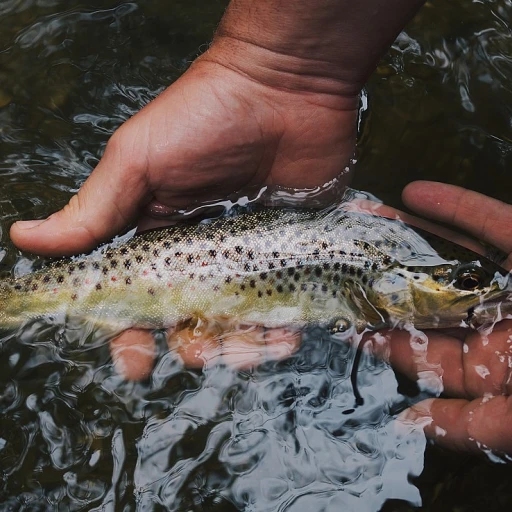

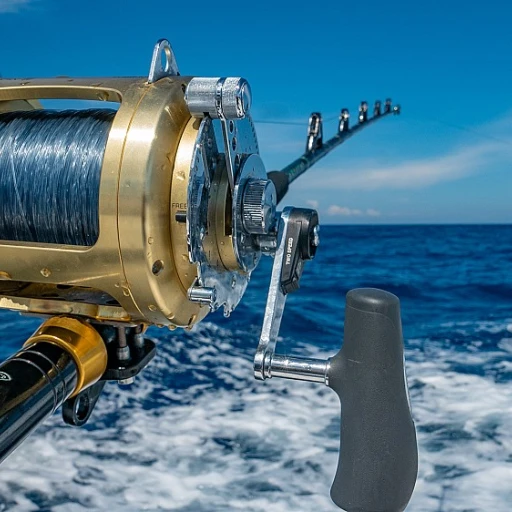
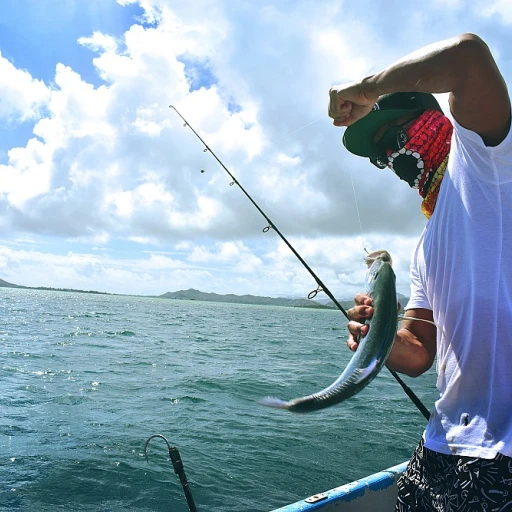

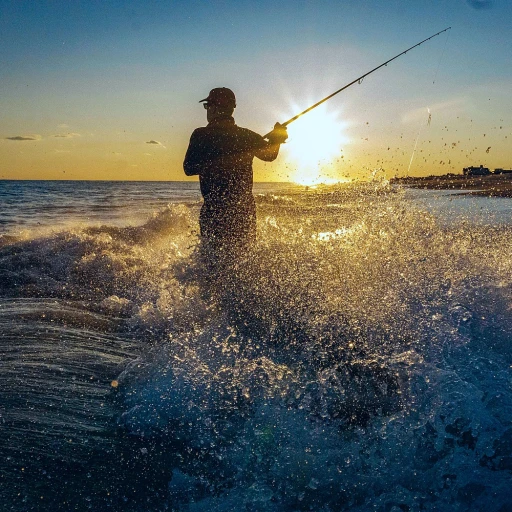


-large-teaser.webp)
